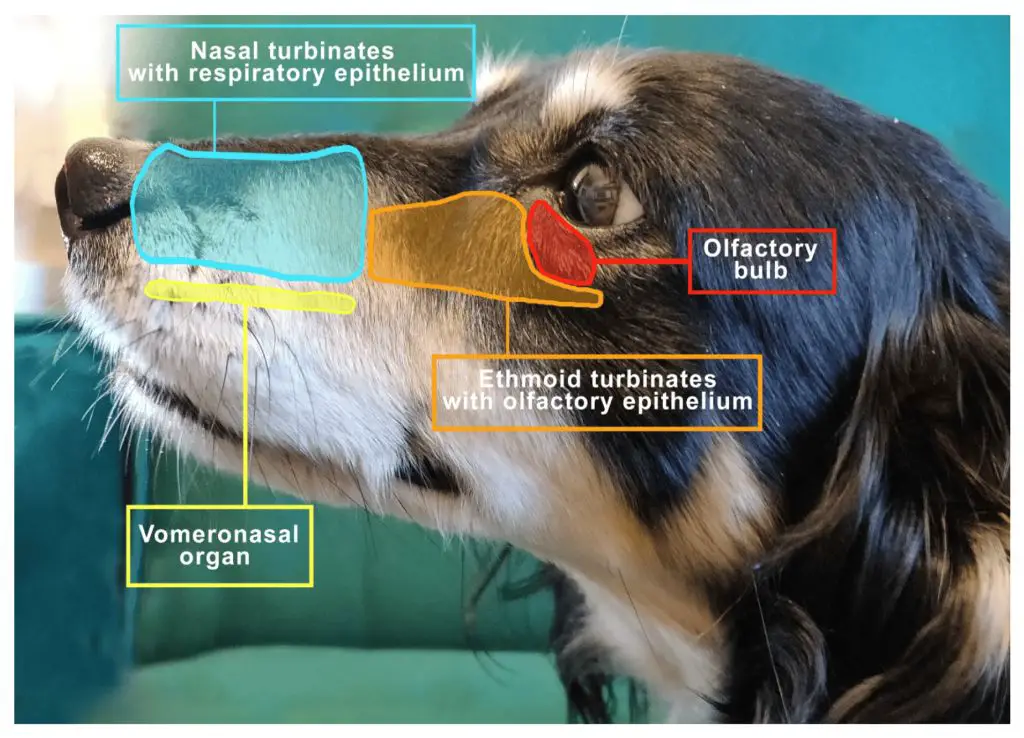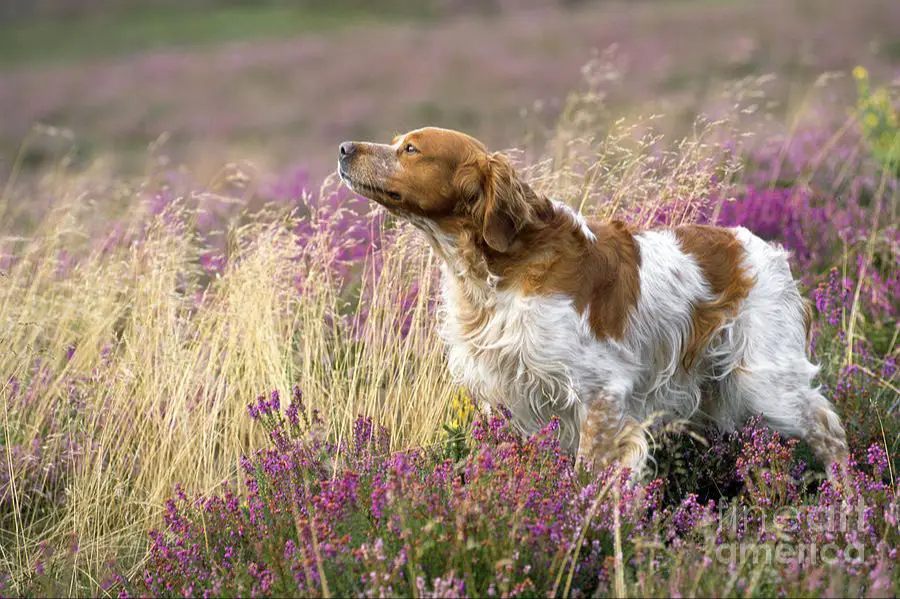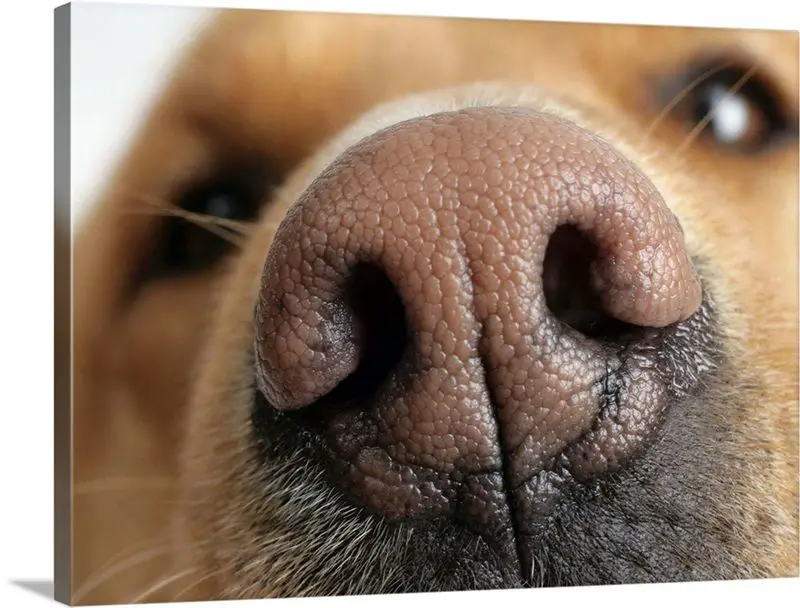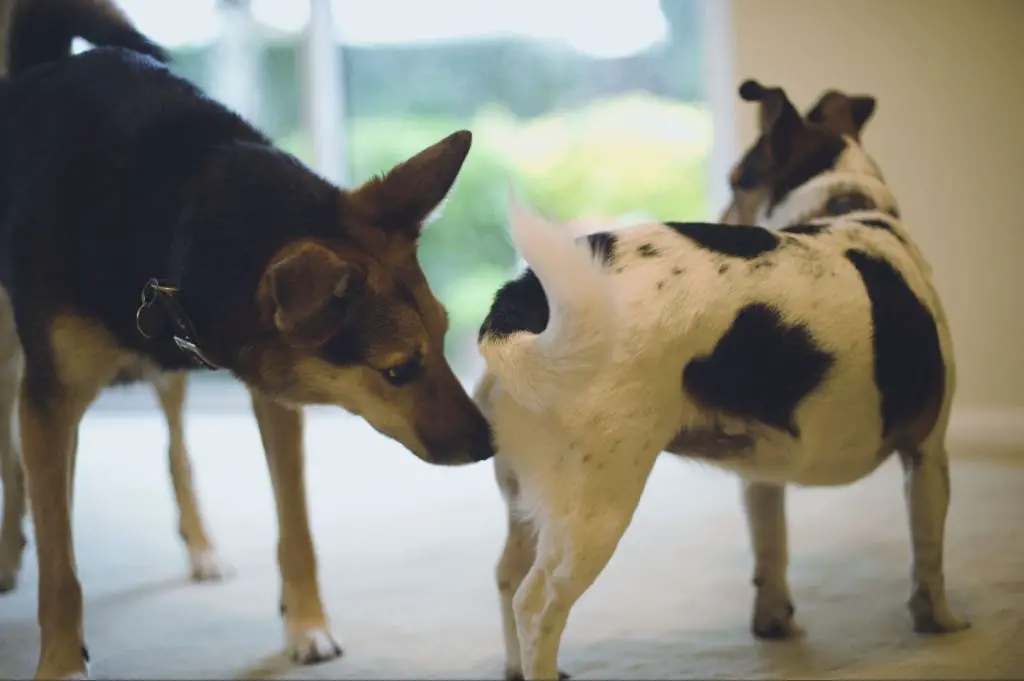Introduction
Did you know that a dog’s nose contains over 300 million scent receptors, while humans only have about 6 million? Dogs have an incredibly advanced sense of smell thanks to their specialized noses.
In this article, we’ll explore the unique anatomy behind your dog’s wet nose. We’ll learn about how airflow and moisture help dogs detect scents, communicate, and even regulate body temperature. We’ll also cover what that cool, damp nose means for your dog’s health. By the end, you’ll understand exactly why your furry friend’s snout is the way it is.
Anatomy of a Dog’s Nose
A dog’s nose contains complex internal structures that allow it to have an excellent sense of smell. The visible part is made up of the nostrils (nares) and nasal planum. Inside there are intricate nasal passages and an olfactory chamber housing odor receptors.

The nostrils take in scents from the air. They have multiple cartilage rings that keep them open and flexible. Inside the nostrils are nasal folds or scrolls that direct airflow.
Air then moves through the nasal passages in the snout to the nasal cavity. This area contains the conchae – bony, curved structures covered in specialized mucosa tissue that detect smells. There are three separate conchae which creates a large surface area of olfactory membranes.
At the back of the nasal cavity is the olfactory chamber lined with a mucus membrane containing around 300 million olfactory receptors. These receptor cells detect smells and send signals to the brain for interpretation. The combination of receptors stimulated creates the perception of different odors.
This complex nasal anatomy packed into a dog’s snout provides an extremely sensitive smelling apparatus. The large nasal surface area and multitude of olfactory receptors allow dogs to pick up scents undetectable to humans.
Sense of Smell
A dog’s sense of smell is vastly superior to humans. Dogs have up to 300 million olfactory receptors in their noses, compared to only about 6 million in humans. This allows dogs to detect odors at concentrations nearly 100 million times lower than humans can. Dogs can pick up scents that humans aren’t even aware of.

Dogs’ noses also have specialized olfactory epithelial tissue that allows them to segregate odors. Their nostrils have folds of tissue which serves to help distribute airflow and trap scent particles. When a dog inhales, air does not go directly to their lungs like in humans. Instead, it gets diverted to the olfactory epithelium which analyzes the scent before the air reaches the lungs. This allows dogs to isolate, sort, and identify different odors more efficiently.
A dog’s wet nose also helps amplify scent. As air moves through the nasal passages, moisture and mucus help dissolve odor molecules so they can be detected by olfactory receptors. The wet nose acts like a concentrating apparatus for scents. This gives dogs an edge in following scent trails and tracking down smells of interest.
Thanks to their incredible sense of smell, dogs can detect things that humans can’t. They can pick up on subtle changes in human scents that may indicate medical conditions like cancer or diabetes. Dogs can smell drugs, explosives, gas leaks, mold, and more. Their nose allows them to experience the world in a way far beyond our limited human senses.
Moist Nose
A dog’s moist nose is vital for its powerful sense of smell. The mucus and olfactory glands on a dog’s nose work together to absorb scent particles. When dogs inhale, air gets trapped in the mucus on their nose and the olfactory glands analyze the smell particles stuck in that mucus. The olfactory glands contain olfactory receptor neurons that detect smells and transmit signals to the brain. The mucus on a dog’s nose traps scent particles, dissolving them so they can be detected by the olfactory glands.

There are many olfactory glands spaced out across the surface of a dog’s moist nose. This spacing allows dogs to pinpoint exactly where a smell is coming from based on which receptors detect it. The olfactory glands provide a big sensing advantage over humans, who only have around 6 million olfactory receptors compared to a dog’s 150-300 million.
Furthermore, the mucus on a dog’s nose helps soften scents for improved detection. It moisturizes air before it reaches the olfactory glands. Dry scents get dissolved in the mucus so they can be properly analyzed. A moist nose also allows dogs to absorb scent particles when directly sniffing objects, not just the air. All these factors contribute to a dog’s amazing sense of smell.
Temperature
A dog’s nose is warm thanks to an intricate network of blood vessels located just under the skin. The moist tissues in the nasal passages are rich with capillaries and blood flow. This increased blood circulation helps warm incoming air before it reaches the dog’s lungs.
Dogs have a temperature regulating organ called the carotid rete which further warms the blood supplying the brain and nose. Essentially, a dog’s entire nose is specially adapted to keep it consistently warm compared to the rest of its body.
The warm nose helps humidify and filter incoming air before it reaches the lungs. It also aids dogs in sensing scents, as chemical receptors function better at higher temperatures. The warmth makes it easier for dogs to pick up subtle smells in the air through both breathing and scent particles dissolving into the moist nasal tissues.
So in summary, a complex nasal anatomy packed with blood vessels helps ensure a dog’s nose stays warm and functional for scenting and respiration.
Why Is a Dog’s Nose Warm and Wet?
Your dog’s incredible nose has some surprising features that help it function at the highest levels. A closer look reveals there’s more than meets the eye with your pup’s snout.
Breathing
Dogs rely on their noses not just for smelling, but for breathing too. The moist tissues inside a dog’s nose help warm and filter the air as they breathe in. When air enters the nostrils, it passes over specialized olfactory tissues coated in mucus before reaching the lungs. This allows dogs to enjoy a continuous stream of smells with each breath. The incoming air is also warmed and humidified so it doesn’t dry out the sensitive nasal passages. Particles and debris get trapped in the sticky mucus inside the nose, preventing them from reaching the fragile lungs. Next time you see your pup panting with his mouth open after exercise, you’ll know his nose is still hard at work channeling air in and out even when the mouth is ajar.
Communication
Dogs rely heavily on their sense of smell to gather information about other animals. Their moist noses play an important role in detecting pheromones, which allows dogs to identify other dogs and animals. Pheromones are chemical substances that carry information and trigger social responses. When dogs come into contact with pheromone signals, they can determine things like a dog’s gender, reproductive status, age, and even mood.

One way dogs use pheromones is to get familiar with new dogs. When two dogs meet, they will often sniff each other’s genital areas and anal regions to pick up these chemical cues. Male dogs can detect if a female dog is in heat, while female dogs can sense if a male is sexually mature and ready to mate. Dogs can also detect adrenaline and cortisol levels through smell, which allows them to pick up on fear and stress in other animals.
Beyond pheromones, a dog’s wet nose also helps absorb subtle chemical compounds as it makes contact with objects and other dogs. This gives them a wealth of social information about other animals in their environment. Their ability to “read” smell cues allows dogs to communicate, avoid fights, find mates, bond with their owners, and detect danger or threats from unfamiliar animals.
Tracking
Dogs have incredible scent tracking abilities due to their powerful sense of smell and instincts for hunting prey. Their long snouts give them excellent sniffing capabilities, and specialized olfactory receptors allow them to pick up even the faintest odors.
When tracking a scent, dogs use their moist noses like a fingerprint to identify the unique smell molecules that each person or animal gives off. As they follow a trail, the scent becomes more concentrated closer to the source, allowing dogs to determine the direction it’s coming from.
Certain breeds like bloodhounds have up to 300 million scent receptors, making their sniffers extremely sensitive for tracking. Their loose, droopy ears also help waft odors towards their nose as they follow a scent trail.
Police dogs are able to follow human scents over great distances and even across water. Hunting dogs can track their quarry after its long gone by picking up broken twigs, disturbed dirt and other signs it left behind. SAR dogs can locate missing persons in avalanche debris and under rubble by detecting their scent.
A dog’s tracking abilities are incredible. Their superior sense of smell allows them to follow trails and locate the source of odors that humans wouldn’t even notice. This makes them excellent trackers for various working roles.
Keeping Your Dog’s Nose Healthy
A dog’s nose is a sensitive organ that requires care and attention. There are several ways to help keep your dog’s nose in good health:
Groom regularly. Gently wipe your dog’s nose with a damp cloth to remove dirt, debris, and dried mucus. Be careful not to scrub too hard.
Use nose balms. Apply vet-approved nose balms or oils to moisturize dry noses. These provide protection against cracking and irritation.
Avoid irritants. Keep your dog away from harsh chemicals, cigarette smoke, dust, and other irritants that can damage nasal tissues.
Protect from sunburn. Use dog-safe sunscreen on light-colored or hairless noses to prevent painful sunburn.
Check for foreign objects. Make sure nothing is stuck in your dog’s nostrils which could cause injury or infection.
Monitor breathing. Difficulty breathing through the nose, noisy breathing, or nasal discharge could indicate a health issue requiring veterinary attention.
With proper care and awareness, you can help keep your dog’s precious nose in the best condition possible.
Conclusion
In summary, a dog’s nose is wet and warm for several important reasons. A dog’s sensitive nose contains many blood vessels and moisture-producing nasal glands, which help enhance its amazing sense of smell. The nostrils’ wet surfaces also help trap scent molecules. A dog’s nose needs to be kept cool and moist in order to function properly, which is why dogs pant and have wet noses. The moisture helps regulate body temperature. A dog’s nose print is also as unique as a human fingerprint, allowing them to be identified. Overall a dog’s wet nose is a sign of good health and an adaption to aid their exceptional sense of smell. Dogs use their nose for essential communication and tracking abilities. Next time your dog greets you with a warm, wet nose, you can appreciate the fascinating biology behind it!